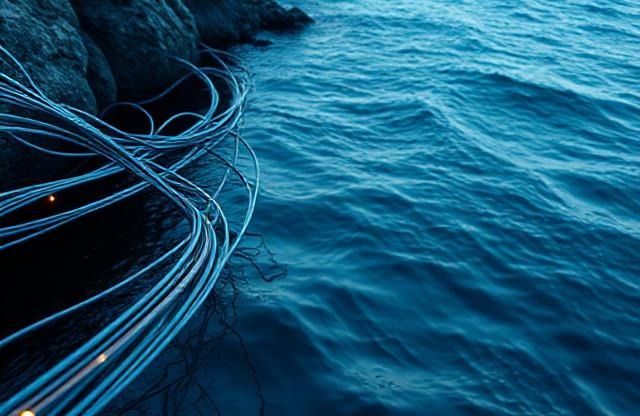Meta, the tech giant known for its innovations in social networking and virtual reality, has embarked on a bold new venture called Project Waterworth. This initiative involves laying a subsea internet cable to enhance global connectivity, promising faster internet speeds and better digital access across the globe. But why is Meta investing in such an ambitious project, and what could its impact be? Let’s dive deeper.
The Purpose Behind Project Waterworth
The internet is the backbone of today’s digital economy, enabling communication, commerce, and innovation. Yet, large portions of the world, particularly in developing regions, still face limited or unreliable internet access. With Project Waterworth, Meta aims to:
- Expand Connectivity: The subsea cable will provide high-speed internet to underserved regions, bridging the digital divide. This aligns with Meta’s broader mission of connecting the world.
- Boost Data Transfer Speeds: By creating a more robust infrastructure, the project will enhance data transmission, making online experiences smoother for users.
- Strengthen Meta’s Ecosystem: As a company heavily reliant on internet usage for platforms like Facebook, Instagram, and WhatsApp, Meta’s investment ensures the reliability and scalability of its services.
Benefits of Project Waterworth
The implementation of Project Waterworth has several promising benefits:
1. Improved Access to the Internet
For millions of people, this subsea cable will be a gateway to affordable and reliable internet. Improved connectivity in remote regions can foster education, entrepreneurship, and access to essential services.
2. Economic Growth
Countries with enhanced internet infrastructure often experience significant economic benefits, including job creation, the growth of digital industries, and increased foreign investments. Learn more about how tech developments drive economies on our trending tech news section.
3. Faster Online Services
With better connectivity, users across the globe can expect faster load times and fewer interruptions, whether streaming content or using cloud-based applications. This will also improve the performance of platforms like Meta’s own social media apps and VR initiatives.
4. Support for Emerging Technologies
As technologies like AI, IoT, and the Metaverse continue to evolve, high-speed, low-latency internet becomes a necessity. Project Waterworth lays the groundwork for these innovations to thrive. For insights into the future of AI and IoT, check out our latest articles.
Consequences and Challenges
While the project holds tremendous promise, it’s not without its challenges and potential downsides:
1. High Costs and Environmental Concerns
Building and maintaining a subsea cable is an expensive undertaking. Additionally, the installation process may impact marine ecosystems, raising concerns among environmentalists. Learn more about the environmental impact of big tech initiatives.
2. Geopolitical Issues
Subsea cables often cross international borders, potentially creating political disputes over control and access.
3. Reliance on Big Tech
As companies like Meta invest in global infrastructure, there’s growing apprehension about the influence of Big Tech on critical internet systems. This could lead to debates about data sovereignty and privacy.
What Does This Mean for the Future?
Project Waterworth represents a significant step toward global digital transformation. If successful, it could:
- Bridge digital inequality, giving people in remote regions access to the same opportunities as those in urban centers.
- Enable the seamless rollout of future technologies like the Metaverse and AI-driven applications.
- Make the internet faster and more resilient against outages.
However, stakeholders must address concerns about the project’s environmental and geopolitical implications to ensure a positive and equitable impact.
FAQ About Project Waterworth
1. What is Project Waterworth?
Project Waterworth is Meta’s subsea internet cable initiative aimed at improving global connectivity, enhancing internet speeds, and supporting emerging technologies like AI and the Metaverse.
2. Why is Meta building a subsea cable?
Meta is building this cable to provide high-speed internet to underserved regions, boost data transfer speeds, and strengthen its ecosystem of services, including Facebook, Instagram, and WhatsApp.
3. What are the benefits of Project Waterworth?
The project will expand internet access, drive economic growth, improve online services, and support the development of future technologies.
4. Are there any challenges associated with Project Waterworth?
Yes, the project faces challenges like high costs, potential environmental impact, geopolitical issues, and concerns about Big Tech’s influence on global internet infrastructure.
5. How will Project Waterworth impact emerging technologies?
By providing high-speed, low-latency internet, the project will create a foundation for advancements in AI, IoT, and the Metaverse to thrive.
Stay Updated with GadgetNewz.com
For more insights on tech advancements like Project Waterworth and their global implications, visit GadgetNewz.com. We provide in-depth coverage of the latest developments in technology, including emerging AI innovations, smart home devices, and groundbreaking events in the tech world.
Conclusion
Meta’s Project Waterworth is more than just a subsea cable; it’s a step toward a more connected and inclusive digital future. While challenges remain, its potential benefits could redefine how the world accesses and uses the internet. Stay tuned to GadgetNewz.com for updates on this transformative project and other tech innovations that shape our world.


